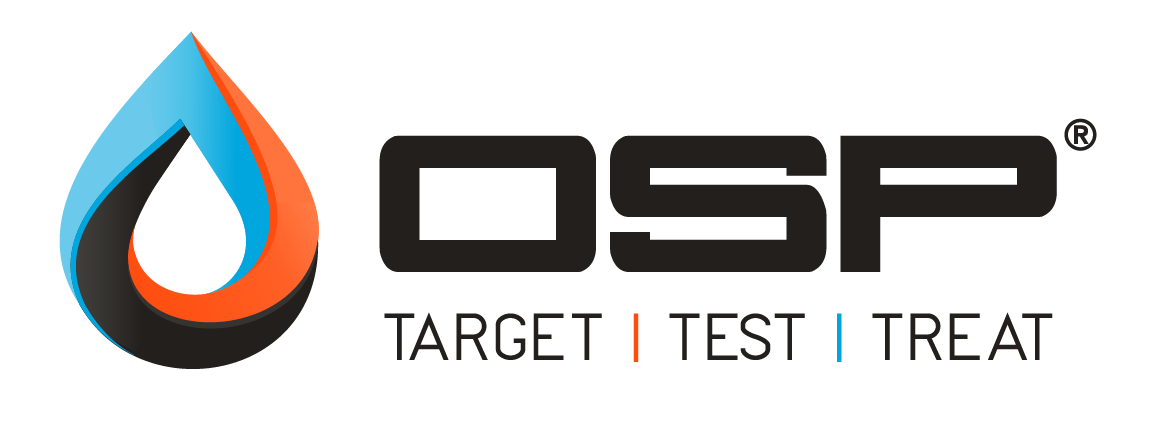LET THE DATA DRIVE DECISIONS
Achieve biocide selection optimization and cost effectiveness with Kill Studies
Lab testing provides a baseline for field application based on known information. It can’t anticipate the exact conditions 1,000’s of feet underground or all the other equipment and processes on-site. When in doubt, buffer your biocide dosage to ensure you are giving your well the best fighting chance against souring and corrosion challenges.
The following are some examples of kill studies conducted for different applications. Each had different KPI’s based on the application type.
Microbial control in the tank farm was required prior to injection. A glut quat was tested against the 2K7, and looked comparable in the lab studies as shown, but wasn’t having the same effectiveness on site. The client switched to 2K7 Biocide and saw reduced counts in the tankage, as well as reduced numbers at the end of the pipelines injection wells. There was some indirect treatment improvements that helped reduce demulsifier requirements at the facility that the client attributed to this biocide application as well.
Note: Higher microbial counts are seen at short contact times, due to the mechanism of kill by 2K7. The ATP is still intact as the cell dies. This is expected especially at less than 24hrs of contact.
2K7 Biocide and Glut Quat: Tank 1 Treatment

2K7 Biocide and Glut Quat: Tank 2 Treatment

Due to pad completions the well would be shut in for up to 4 weeks prior to flow back. Long term control was required. The initial kill study showed reduced microbial counts up to 3 weeks with a number of biocide dosages. Control was established at 100pg of ATP per ml for this client. Upon re-inoculating a select number of tests with 1 ml of the original source waters (at 1183 pg of ATP/ml) you can see the only samples with a residual kill are the 2K7 Biocide dosed waters.
Frac Water Planktonic LifeCheck Assess

The waters were grabbed pre-chem and dosed at the noted active concentrations. 2K7 Biocide achieved control for 48hrs at 25-100ppm whereas the glute required higher concentrations of 125-250ppm active in order to maintain the same control. Long term contact was not tested for this client.
Re-Innoculation

Mitigate against costly mistakes that result from checking the box. Take the time to understand shifting microbial communities and long-term downhole protection requirements based on microbes present. In the absence of the bigger picture, checking the box may result in exponential costs. No one system is the same, consequently, there is no silver bullet when it comes to biocide application.
Big Kill, Little Price Tag
The goal is to narrow in on an effective treatment based on system fluids and operating parameters, that is going to cost as little as possible. We understand price always plays the last card, but don’t let that trump the price paid later by neglecting to translate optimized lab-based studies into actual field application. When kill studies are performed, they are based on source water that was gathered typically weeks before the frac, and prior to containment, trucking, additives, recycling, or environmental changes. Just because 50 ppm of product will control microbes in fresh river water pulled from your canoe under lab conditions, doesn’t mean it will control them on site after the water has been dumped into a dirty frac tank and nature heats it up to 30°C that week. Accept and plan for changes. Optimize the treatment program by using your kill study as a starting point, and test on site to confirm biocide loadings make sense for real-time ATP levels. This allows you to manage your kill and costs efficiently.
Frequently Asked Questions
What is a Kill Study?
Biocides are not “one size fits all”. A kill study is a laboratory experiment designed to quantify biocide performance for a given scenario. Also known as a biocide selection study, they attempt to simulate various treating conditions in order to determine the best fit biocide for a given fluid and application. Application environments, process components and fluid systems are mirrored to provide representative data and an understanding of the products behaviour in a specific application. To be the most representative, the exact water or fluid to be treated should be used in the study. Additional factors a well-designed kill study will consider include, biocide dose, application contact time, temperature, fluid chemistry and application compatibility.
Why are Kill Studies important?
Effective operations and longevity of asset life rely on proper microbial control programs. Like all pre-job performance tests, kill studies inform field decisions by providing insight into biocide product performance and providing a starting point for field optimization.
Biocide use includes not only understanding the objectives of control, but also what influences the performance of the various biocides. The outcome of a biocide selection study is laboratory validation of which biocide (and at what dosage) is likely to be the most effective, specific to your criteria. It takes the guessing out of the equation and drives cost efficiency focused on your pre-determined KPI’s.
Looking for more information about Kill Studies?
